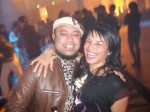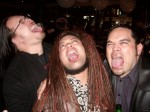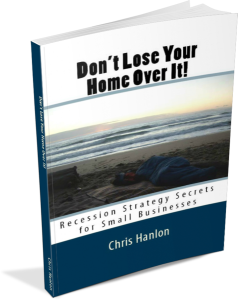Many times I have told the story of the best team I was ever a part of. A team that was considered inferior, but became the gold standard for output in our corporation.
Everything that I am writing here happened by chance, but the point is that by understanding how it worked, you should be able to get a similar result by design.
The ingredients are simple:
- A balanced team
- Trust
- A shared purpose
- Collaboration
However a recipe is not just a list of ingredients. – You need to mix those ingredients in the right way to get the desired result, so let me tell you how it worked out for us…
The Hamilton Training team was considered the ‘poor cousins’ within the national corporation. Whether this was actually true or not, is largely irrelevant, what is important is that this is how it felt. We were in the smallest city of the four main centres and we were the only centre that was not assigned to do any design work. The team consisted of six people: Darius (Team Leader); Owen; Karl; Tai; Becs; and myself.
The Right People make a Team
The first important point was the make-up of the team. It was a perfectly balanced mix. We had an HR guy come and do a Myers-Briggs team profile, and it turns out that there were no two people in the team the same, in fact we were made up of three pairs of ‘opposites’. This was important because it meant that all of us looked at things from a very different point of view, and when working collaboratively we had a huge advantage in terms of the quality of our output. (See my point on Assembling the Team in a recent post).
However that sort of mix does not automatically make a strong team. In fact it can often tear a team apart, the critical ingredient to make a diverse, balanced team functional is…
Trust – The Glue that Binds the Team
For example Darius and I were opposites on the Myers-Briggs chart, and to begin with we ‘butted heads’ frequently, because we looked at things in almost exactly the opposite way. But we developed a level of trust and respect of one another’s ability that meant we would run things past each other to get that opposite point of view in order to make sure what we were working on was strong from both sides. -Five years later and in different roles, we still do this with some of our important work or presentations.
So how do you create this trust?
The first thing is to really get to know each other. As a team we did things together. We had a few drinks, we partied together and we shared some ‘out-of-work’ experiences. We got to know each other as individuals. The strengths the weaknesses and attractive qualities and the unattractive qualities of all of us.

Becs & Karl at “East meets West” Christmas party
But there was one additional thing that built upon our trust, something that is talked about frequently but rarely implemented effectively. That is…
A Shared Purpose
Many leadership and management books talk about the importance of a shared purpose. Although I have witnessed many attempts to ‘install’ a shared purpose, I have not yet seen it implemented effectively. I believe the reason for these failures is that without a balanced group of individuals who trust one another, the shared purpose alone will not create the transformation you want.
So how did our Perfect Team stumble on a Shared Purpose?
As I said we were the only team in the country who was not assigned design work. We felt that we were not trusted to do this (whether this was true or not is beside the point). Owen was renowned for his “Be Famous for the Right Reasons” speech; which he preached to all new inductees as well as to us, his team mates.
So when we finally got a breakthrough, and one of us was assigned a training design project the team pulled together in a meeting. We agreed that we wanted the Hamilton Team to be Famous for the Right Reasons. Regardless of which individual was assigned the training project, we realised that it would reflect on the reputation of all of us, that we would prosper or decline together.
The Fruits of Collaboration
As a result we would have a brief meeting every other day where the person assigned a design project would present where they were at, and what they had put together. They would be frank with where they were stuck or running out of ideas, and often these turned to powerful brainstorming sessions to overcome a hurdle or obstacle.

Tai & Darius at the XT Rocks Launch party
This Collaboration worked because we trusted each other so completely that we did not feel threatened by exposing where we were weak. This level of trust also meant that although we didn’t always understand a team-members point of view immediately (because their viewpoint was so different than our own), we never dismissed it out-of-hand but carefully balanced all points of view.
We all had certain specialities, which we utilised in the team. An example: for a while I was the powerpoint animation expert, and if anyone needed powerpoint animation on their design project, I would help them do that. But of course we all learned off each other so after a while everyone was at a similar skill level.
The result was that we had extremely well thought out, well rounded training design that had something for all learning preferences. Our team quickly got a reputation for having a high level of quality design.
I actually started feeling sorry for the other centres. They really couldn’t compete. There was no way that any individual designer could match what we were doing as a team. All the other centres did their design individually, and because they were working in isolation they stagnated. -They did not grow their individual skills as quickly as our team did.

Karl, Tai & Owen Howling it up at the XT Rocks Launch party
The energy we had as a team was infectious. We felt unstoppable and relished any challenge. Others in the company would keep asking how they could get on our team because we seemed to be having so much fun. The team is now scattered around the world, but we still keep in touch. Karl & Tai are still training in Hamilton, and they have successfully extended the Shared Purpose across the wider team in the call centre that they serve.
What you can do
You have the ingredients:
- A balanced team
- Trust
- A shared purpose
- Collaboration
the point is that each of these 4 elements builds on the elements preceeding it. If you don’t start with the right people in the team then there is no point in going further.
But if you have inherited a ‘team’ or group of people that might not be ideal, don’t despair. I would suggest carefully splitting the group into smaller ‘teams’ that can work together. These can be pairs, trios or groups of four.
Challenge these smaller teams to do something extrodinarily well. -Don’t get them to compete against each other!
When they start gaining trust in the smaller teams, working towards a shared purpose, and collaborating effectively, they will have a new ‘operating model. Then you will be able to start merging the smaller teams into a larger effective team. It is important that they are not competing against each other in their smaller teams as this can hinder merging the teams later. Ideally they will work on separate parts of the whole so that at some level all of the ‘sub-teams’ ar actually collaborating.
I hope that helps you in your quest for excellence.
And in closing I would like to thank Darius; Owen; Karl; Tai & Becs for being part of one of the most exciting periods of my life. 🙂







